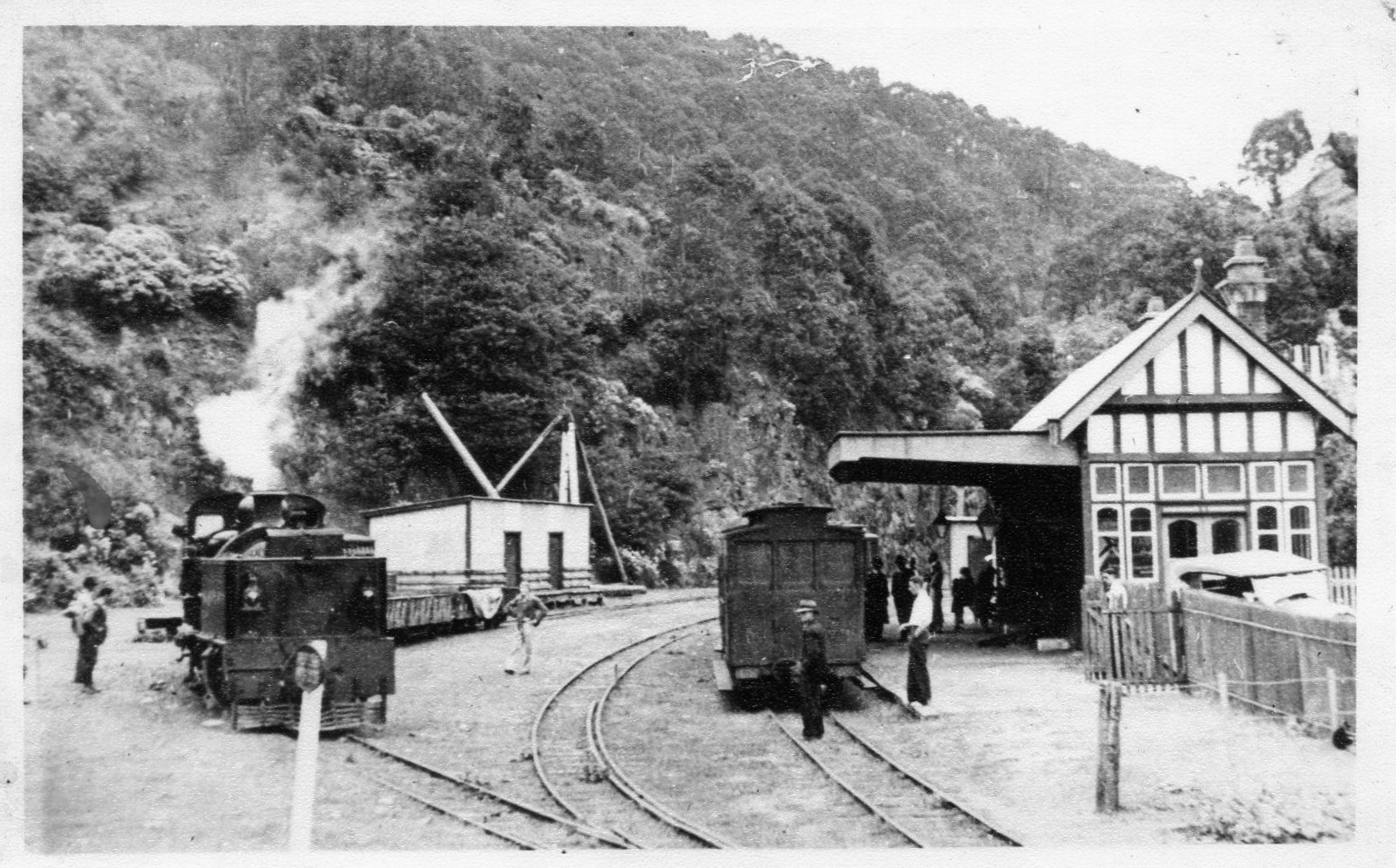Victorian Railways G class on:
[Wikipedia]
[Google]
[Amazon]
The Victorian Railways G class is a class of steam locomotives built for the


 The design was based on the earlier M and Ms class Garratts constructed for the
The design was based on the earlier M and Ms class Garratts constructed for the
Victorian Railways
The Victorian Railways (VR), trading from 1974 as VicRail, was the state-owned operator of most rail transport in the Australian state of Victoria from 1859 to 1983. The first railways in Victoria were private companies, but when these companie ...
2 ft 6 in gauge branch lines by Beyer, Peacock & Company. They were introduced in 1926 to increase train sizes, eliminate the practice of double heading NA locomotives and reduce losses on these lines. Their tractive effort
As used in mechanical engineering, the term tractive force can either refer to the total traction a vehicle exerts on a surface, or the amount of the total traction that is parallel to the direction of motion.
In railway engineering, the term t ...
was comparable to the most powerful branch line locomotives on the Victorian Railways , the K class.
Origins


 The design was based on the earlier M and Ms class Garratts constructed for the
The design was based on the earlier M and Ms class Garratts constructed for the Western Australian Government Railways
Western Australian Government Railways (WAGR) was the operator of railway services in the state of Western Australia between October 1890 and June 2003. Owned by the state government, it was renamed a number of times to reflect extra responsi ...
. This design was amongst the earliest of the Garratts, and first entered service in 1911. The major modification was the use of outside frames to allow for the reduction of gauge from to . The design proved durable as two further examples were built for the Australian Portland Cement 3 ft 6 in gauge railway at Fyansford in the 1930s.
Working lives
The locomotives were allocated numbers G41 and G42. G41 was put to work on the Colac to Beech Forest and Crowes line, while G42 was placed on the Moe to Walhalla railway. The locomotives stayed on these lines, returning toNewport Workshops
The Newport Railway Workshops is a facility in the Melbourne suburb of Newport, Australia, that builds, maintains and refurbishes railway rollingstock. It is located between the Williamstown and Werribee railway lines.
History
Plans for a wo ...
for heavy repairs when necessary. After the closure of the Walhalla line in 1955, G42 was moved west to Colac, where it worked the line in conjunction with G41. At the closure of this line in 1962, only G42 was considered to be in operational condition, G41 was mostly cannibalised for parts to be used in G42.
Disposal and preservation
After closure both locomotives were removed to the Newport Workshops, and G41 was quickly scrapped in October 1964, the number plates, whistle and headlights were recovered and are housed at the Menzies Creek Museum. G42 was bought from the Victorian Railways in July 1964 by the Puffing Billy Preservation Society, it was transferred by rail toBelgrave Belgrave may refer to:
Places
*Belgrave, Cheshire, an English village
*Belgrave, Leicester an English district
*Belgrave, Victoria, a suburb of Melbourne, Australia
** Belgrave railway line
**Belgrave railway station, Melbourne
**Belgrave (Puffing ...
in January 1968 and finally arrived at the Menzies Creek Steam Museum on 10 February 1968. The museum also acquired one of the Australian Portland Cement Garratts along with an unused spare boiler. In 1978 a decision was made to restore G42, a task that was completed in April 2004. The spare boiler from Australian Portland Cement was used instead of G42's original boiler as this had had its copper inner fire-box and boiler tubes removed by the V.R. before sale to the Puffing Billy Preservation Society in 1963.
G42 was withdrawn from service in February 2009 pending a "D" exam as part of the Puffing Billy Railway's regular maintenance program. On 16 August 2009, G42 returned to service for one day only to celebrate "100 years of the Garratt locomotive design" with a special to Cockatoo and returnPBPS "Narrow Gauge" magazine before returning to storage pending the mentioned "D" exam.
On 12 December 2010, G42 moved under its own steam after extensive repairs including turning more than 1" from the wheel tyres. It was put to a test with a difficult shunt of 20 cars into different roads. The locomotive is now used on the "Green time table" service which otherwise calls for the double heading of NA class locomotives on one of the trips, enabling its greater hauling capacity to substitute for the two NAs.
As of August 2015, G42 is still currently operating on a regular basis. It will only operate on weekends, special occasions (Public holidays, etc.) or if there is a shortage of NAs on running days not covered by the days stated above.
This running schedule was devised in an attempt to prolong G42s service life mainly due to the tire wear caused by the locomotive design and tight curves of the railway.
References
Further reading
*External links
{{Victorian rolling stock Garratt locomotivesG class G class or Class G may refer to:
Locomotives
* NZR G class (1928), a type of steam locomotive used in New Zealand
* Tasmanian Government Railways G class, a class of 0-4-2T steam locomotive used in Australia
* V/Line G class, a class of diese ...
Beyer, Peacock locomotives
2 ft 6 in gauge locomotives
2-6-0+0-6-2 locomotives
Railway locomotives introduced in 1926